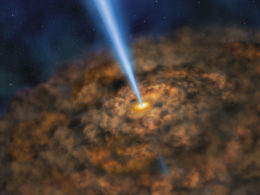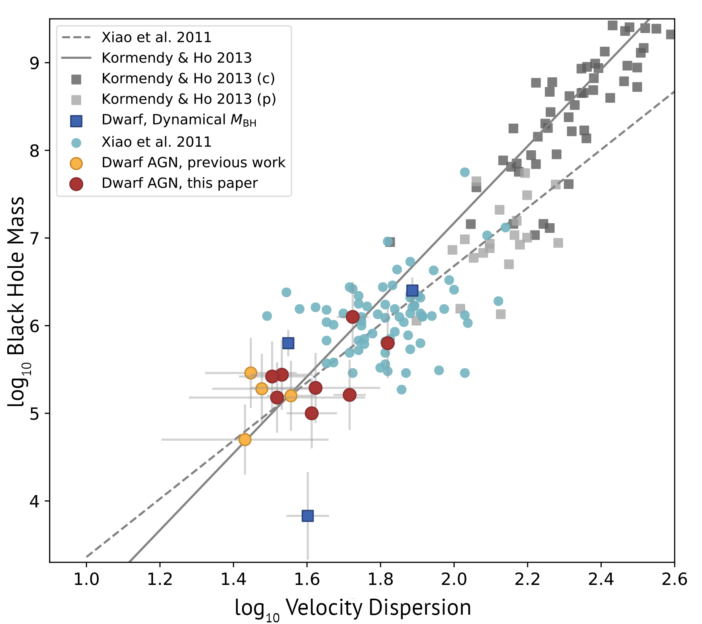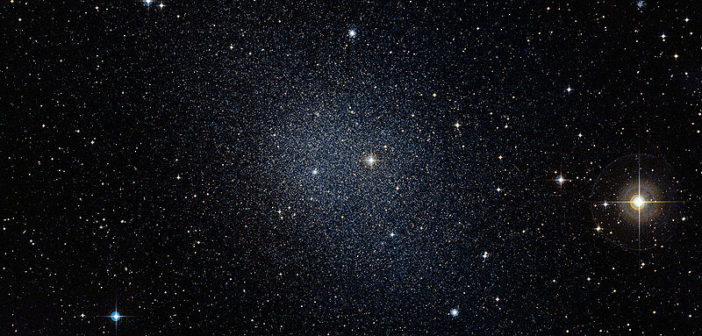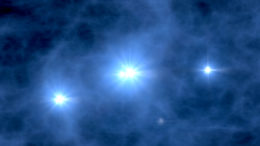Editor’s note: Astrobites is a graduate-student-run organization that digests astrophysical literature for undergraduate students. As part of the partnership between the AAS and astrobites, we occasionally repost astrobites content here at AAS Nova. We hope you enjoy this post from astrobites; the original can be viewed at astrobites.org.
Title: Populating the Low-mass End of the MBH–Mσ∗ Relation
Authors: Vivienne Baldassare et al.
First Author’s Institution: Yale University
Status: Published in ApJL
Dwarf galaxies are believed by some to be time capsules, but instead of old records, they are thought to preserve the seeds of black holes formed in the early universe. This is because most dwarf galaxies detected in the nearby universe don’t show signs of interacting with their galactic neighbours, leaving these relatively low-mass collections of gas, dust, and stars to evolve in isolation. Without contamination from other galaxies, astronomers can treat these dwarf galaxies as pristine pockets of the universe’s past. So by analysing the distribution and masses of the black holes in these dwarf galaxies, astronomers can hope to shed some light on how they formed.
Two formation mechanisms dominate discussion: either black holes formed from the collapse of early generations of stars, known as Pop III stars, or they formed from the direct collapse of gas and dust. If the former mechanism dominates then we would expect to find large numbers of low-mass black holes, while the latter mechanism is predicted to produce a much smaller number of higher-mass seeds. Unfortunately, dwarf galaxies are much fainter than their higher-mass counterparts, so they are difficult to detect. The often invisible black holes within provide an even greater challenge.An easier way to detect these black holes is to wait for them to accrete material and emit huge amounts of radiation, turning them into a source known as an active galactic nucleus (AGN). Over the past decade, there has been a huge increase in the number of AGNs detected in dwarf galaxies. Today’s authors aim to place some of these AGNs on a well-known mass & velocity dispersion relation to try and gain insight into how black holes may have formed in the early universe.
Finding the AGNs

Artist’s impression of the thick shroud of dust hiding a galaxy’s active nucleus. [NASA/SOFIA/Lynette Cook]
While velocity dispersion can be measured from the Hα line, it is important that this quantity is independent from the black hole mass. So, for each of these AGNs the authors used the Keck II Echellette Spectrographer to measure the Mg Ib triplet and, where possible, the Ca II triplet. Where both lines were available, the overall velocity dispersion was calculated using the mean of both measurements. Unfortunately, some galaxies occupy redshifts that cause significant contamination at the Ca II wavelengths, so when the Ca velocity dispersion wasn’t available the Mg Ib value was used.
How Low Can You Coevolve?
Today’s paper has doubled the number of black holes in dwarf galaxies plotted on the mass & velocity dispersion relation. Figure 1 shows the results of these measurements and compares them to numerous others across the mass spectrum. It is quite striking that all the AGNs identified in the sample are consistent with the plotted relations. Finding low-mass black holes that lie on these relations can help extend the mass range over which we believe black holes and their host galaxies directly interact. Today’s results show further evidence suggesting that black holes in dwarf galaxies interact with their hosts in similar ways. With this knowledge, astronomers can better understand how black holes across the mass spectrum grow and interact with their galaxies.

Figure 1: Black hole mass vs. velocity dispersion for galaxies across the mass spectrum. The two lines represent fits to different galaxy samples: the solid line is fit to galaxies with bulges, the dashed line is fit to broad-line AGNs. [Baldassare et al. 2020]
However, the authors do try to draw some conclusions from the single black hole (blue, square data point) at the bottom of figure 1 and fact that their black holes were all found because they were AGNs. As was previously mentioned, AGNs are black holes accreting material at a high rate, which not only causes the black holes to emit radiation but also increases their mass. Because of this accretion, the authors believe their detections might be black holes that are more massive relative to the rest of the dwarf-galaxy-hosted population of black holes. The extremely low-mass black hole at the bottom of figure 1, which is not an AGN, may be an example representative of this broader dwarf-galaxy black hole population, according to the authors. If this assumption is correct, it would point toward stellar collapse as the favoured mechanism of formation in the early universe. While this is an interesting argument, it is still somewhat speculative. Before we can make strong conclusions about how black holes formed in the early universe, numerous more measurements will need to be made to determine whether such extremely low black hole masses are the exception or the rule.
About the author, Keir Birchall:
Keir is a PhD student studying methods to identify AGN in various populations of galaxies to see what affects their incidence. When not doing science, he can be found behind the lens of a film camera or listening to the strangest music possible.



2 Comments
Pingback: Badanie procesu formowania się czarnej dziury – PTMA Kraków
Pingback: Badanie procesu formowania się czarnej dziury – Astronomia Śląska